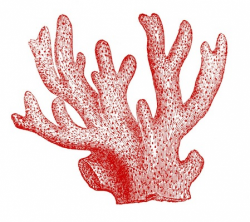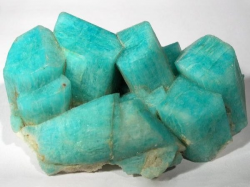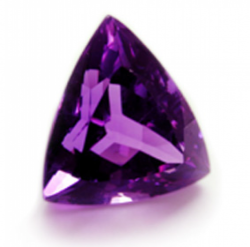What's the meaning of the Pearl »
Pearl
This page is about the meaning, origin and characteristic of the symbol, emblem, seal, sign, logo or flag: Pearl.

Although pearls are not technically 'stones' in the way many other gems are, they still carry a wealth of symbolic meaning. In certain cultures, these beauties are accorded particularly high status, on par with and occasionally surpassing their crystalline brethren.
Highly valued and widely admired for their beauty, pearls typically begin life as a rather unattractive speck on the earth. When a tiny piece of sand, rock or other marine grit finds its way inside an oyster (or other related species of mollusk), the transformation begins; to prevent its soft inner lining from becoming irritated by the intruder, the mollusk coats itself in fine layers of a natural chalk known as nacre. These layers gradually build up over time, repeatedly coating the grit until it acquires the shiny, opaque surface of a pearl. Pearls can also be created artificially by inserting the piece of material directly into the mollusk. These "cultured pearls" not only take less time to form, but can achieve a much more uniform size and shape, making them highly desirable for ornamentation.
The pearl's unique method of creation, as well as the materials involved in that process, lend the gem one of its symbolic meanings: Compared to solid crystalline gemstones such as rubies and sapphires, the physical makeup of pearls is considerably more delicate. When exposed to unbalanced temperatures or products such as cosmetics, it is not unheard of for pearls to become dull or fade in color. This change was often interpreted as an indication that the gem’s owner was in ill health (for more detail on such associations, see the symbol for ‘Turquoise’).
Pearls can come in a whole rainbow of different colors, depending on the circumstances under which they were formed, but white pearls are by far the most famous and, consequently, the most symbolically charged.
Many symbolic attributes of pearls come from the realm of the feminine; the gem has been closely associated with the moon, water, the sea, love, beauty, and purity, all traditionally feminine concepts. The ancient Greeks associated pearls with Aphrodite, the goddess of love who, according to the myths, was born from the sea. In Christianity, the pearl's association with purity and, by extension, chastity, takes on a more visible meaning. Since she gave birth as a chaste woman, the Virgin Mary is sometimes compared to a shell, while Jesus Christ is the pearl that the shell produced. A woman’s virginity has even been colloquially referred to as her “pearl”.
In parts of Asia, pearls are held especially sacred. The Chinese associated them with wisdom and immortality, and sometimes depicted dragons carrying pearls in their mouths or claws. One Chinese tradition says that pearls actually formed from drops of dragon saliva that fell to the earth. The famous Chinese concepts of Yin and Yang are also embodied in pearls; according to Chinese alchemy, the white pearl represents the Great Yang or male energy, and contains within it the true essence of mercury. Meanwhile, the black pearl symbolizes the Great Yin or female energy and holds the true essence of lead. In India and parts of Southeast Asia, the pearl is one of the Navaratnas, a series of nine specific gems that are used to represent the heavenly bodies. In this case, the pearl is representative of the moon.
The symbolism of pearls has also crossed over into linguistics; for example, a particularly insightful idea or remark is often referred to as a “pearl of wisdom”.
Pearls are also the traditional birthstone for the month of June.
- 7,241 Views
Graphical characteristics:
Symmetric, Closed shape, Colorful, Contains curved lines, Has no crossing lines.
Categories: Gemstones and Natural Substances, Miscellaneous.
More symbols in Miscellaneous:
Symbols without any special category attribution but that are widely used worldwide. read more »
More symbols in Gemstones and Natural Substances:
In addition to plants, animals, and geographic features and phenomena, the natural world is home to a vast array of materials and substances that all carry symbolic meaning. This meaning may be rathe… read more »
Citation
Use the citation below to add this symbol to your bibliography:
Style:MLAChicagoAPA
"Pearl." Symbols.com. STANDS4 LLC, 2025. Web. 22 Feb. 2025. <https://www.symbols.com/symbol/pearl>.

















Have a discussion about Pearl with the community:
Report Comment
We're doing our best to make sure our content is useful, accurate and safe.
If by any chance you spot an inappropriate comment while navigating through our website please use this form to let us know, and we'll take care of it shortly.
Attachment
You need to be logged in to favorite.
Log In